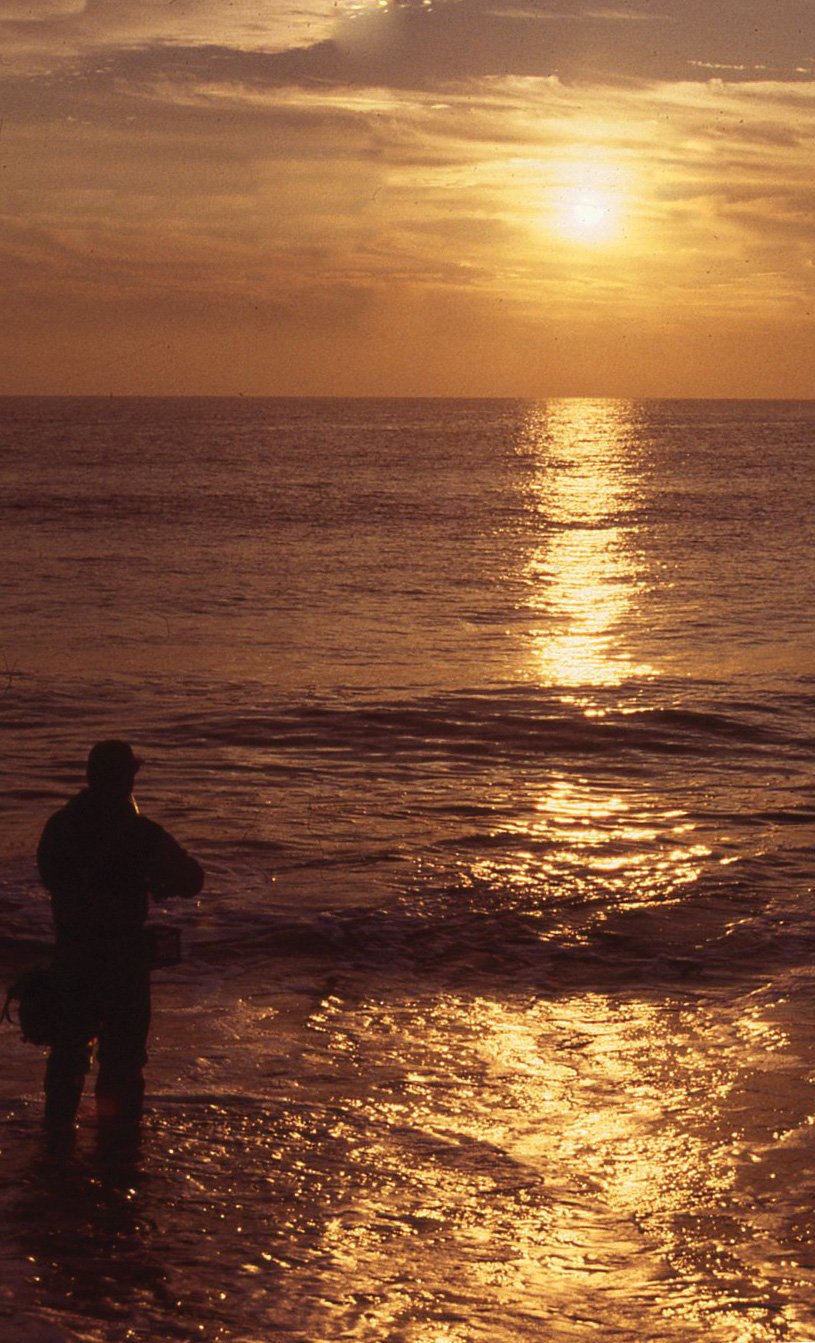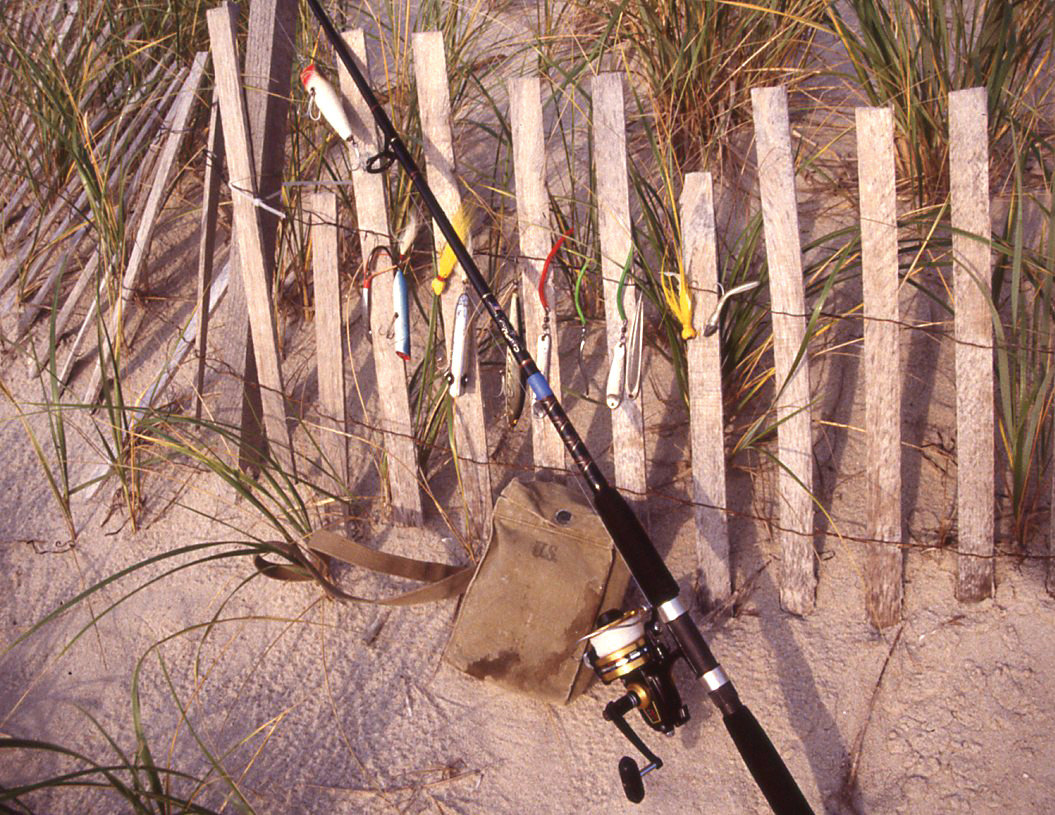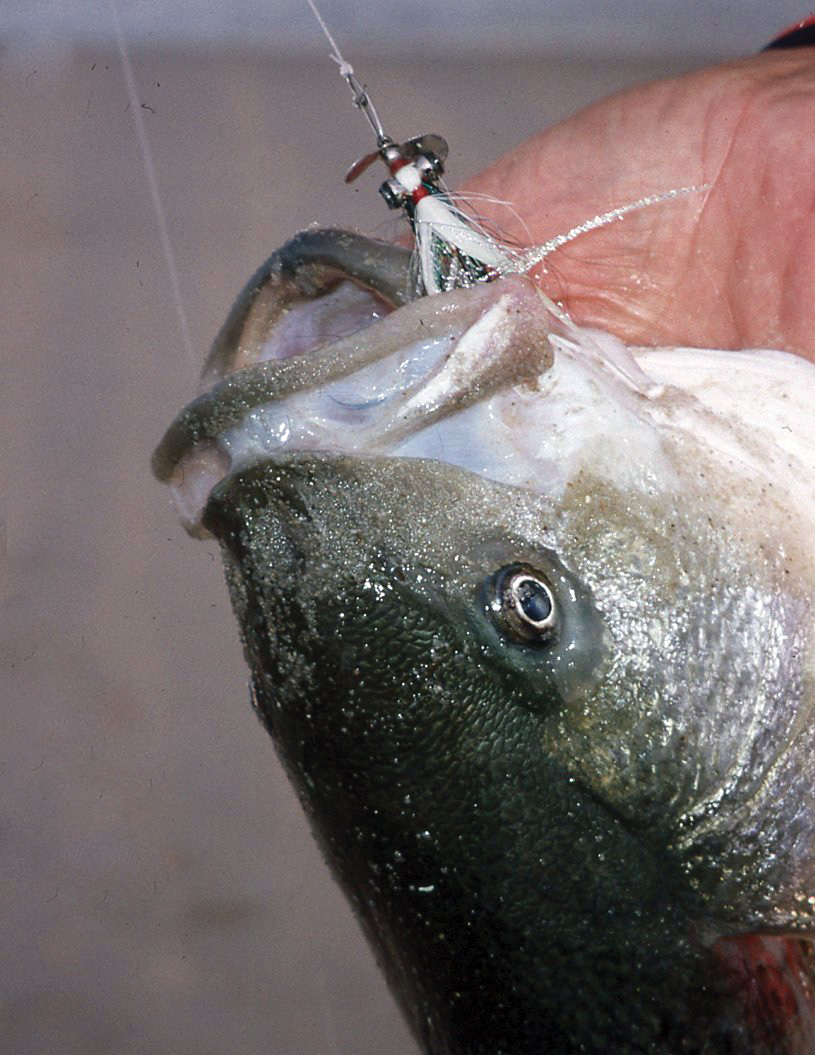
With just a few weeks to go before a New Year, hit the beach for those southbound linesiders.
Admittedly, there will be a nominal number of heavyweight stripers moving within casting range of local beaches and jetties as the year comes to a close. For the most part those heavyweights traverse a mile or more from the beach, feeding on mackerel, herring, bunkers and other large forage.
Many of the last stripers to leave their summer quarters of New England and Long Island waters are the smaller members of the clan, with many traversing the surf close to shore and feeding on vast quantities of small forage species such as spearing, sand eels, rainfish, bunker of the year, anchovies, as well as clams and mussels exposed during storms and a variety of crabs about to bury themselves for the winter. Collectively, this provides us with the most fun-filled opportunities of the entire year, a full two months of traversing the beach for linesiders.
Equipment Bag
The fun part of late fall surf fishing is that I can relinquish the heavier outfits I’m accustomed to using when targeting heavyweights. The hefty 10- and 11-foot rods and big reels were appropriate when casting bunker chunks with 4-ounce pyramid sinkers and 6- and 7-inch long surface swimming and popping plugs, but now I’m switching over to lighter gear.
Admittedly, at my age a lightweight 8-foot spinning outfit fits the bill nicely. It has the capacity to occasionally handle a Hopkins or a darter when surf conditions are rough due to northeast winds. But the prevailing northwest winds make for a pleasant, relatively flat surf, and they enable you to achieve more than enough distance than is actually required.
From now into the New Year, the dominant baitfish along the beach are small, ranging in size from 2 to 4 or 5 inches. The key is using lures in this size range that closely replicate the sand eels, spearing, rainfish and others, all of which are generally packed in tight schools. Often you’ll see schools of sand eels lifted onto the beach by a wave, and as it recedes they frantically swim back into the water. With spearing they’ll often be in tightly knit schools the size of a beach umbrella, fluttering near the surface and barely moving. With rainfish and anchovies they’ll be in small schools too, moving parallel with the beach.
Lures like the Tsunami 3-inch long split tail minnow prove very effective; ditto for a deep running MirrOlure. Small pencil poppers often coax strikes, especially when a bass sees it enticingly fluttering on the surface. I’ve also scored on 4- and 5-inch long Creek Chub subsurface swimming plugs.
Small stainless steel Hopkins lures are consistent producers too. The NoEQL and Shorty are very effective. Make certain to use single hook models, which can have the hook dressed with soft plastic tubing or a feather skirt. They’re especially effective when a mild northeast surf has dissipated the schools of forage. Also effective at that time are block tin squids in the 3- to 4-inch sizes and dressed with a piece of tailhook pork rind.

Two-Team Teaser
Your late season lures can readily be fished on 24- to 36-inch long pieces of 30- or 40-pound test fluorocarbon leader material, using a tiny snap swivel to join line and leader, with a medium size stainless steel snap to enable quick changing of lures. However, while the single lure approach works well, I’m prone to use a teaser in conjunction with my primary lure.
To prepare a leader to accommodate both the primary lure and teaser I begin with a 40- to 48-inch long piece of fluorocarbon or stiff monofilament leader material. Begin by tying a dropper loop about 8 or 10 inches from one end of the leader. Then tie a medium size stainless steel snap to the long end of the leader to accommodate the primary lure and a small snap to the short end to handle the teaser. Then I use a snap swivel at the end of my line, which I snap onto the dropper loop of the leader. Tied in this manner you’ll have the 30-inch section of the leader with the basic lure, and the short 8-inch section for a teaser extending freely away from the longer section of leader.
Most of the primary lures I use have treble hooks or 6/0 or 7/0 O’Shaughnessy style single hooks. The teasers are for the most part tied on size 3/0 or 4/0 hooks, which enables a striper to inhale them with ease and promptly results in a hookup. Most local tackle shops located along the coast will usually have a good variety of teasers available, each of which in size and color resembles the respective forage, such as sand eels, spearing, rainfish and anchovies.
Of late I’ve been using teaser called “Al’s Prop Jobs” which are tied by Allan Sternberg (201-265-6917); they’re tied to closely resemble a variety of forage and have a tiny propeller at the head of the teaser, which gives it an enticing action.

Down & Distance
Currently the North/Central Jersey coastal surf area from Barnegat Inlet to Sandy Hook has suffered drastic change, beginning and caused in part by Hurricane Sandy. Now the replenishment of sand displaced by that and recent hurricanes is being conducted by the United States Army Corps of Engineers. As a consequence even the half dozen hurricanes that have already plummeted the surf this year, and the attempted replenishment by USACE, have removed and forever changed what I call “the surf of the good old days.” It simply no longer exists.
The sand bars along the surf, with medium depth waters inside the bars and breaks between bars often carrying stripers, blues and herring towards the shallows where the forage sought refuge have been severely depleted. The exception is Island Beach State Park, where the surf remains much the same. In other areas where these formations existed surfcasters now have to be cautious, as the sand replenishment projects have piled the sand high on the beaches, and where a gradually deepening surf existed you’ll often experience a steep, almost wall-like drop-off into 5- to 8-foot depths; it’s quite a bit different from much of the Atlantic and Cape May County beaches in New Jersey for example, which slope very gradually towards the east.
What I do and recommend to you is at your earliest convenience to visit your local surf haunts you once fished. Do so on a sunny day with westerly winds and at low tide. This will enable you to clearly access the conditions as they now exist and enable you to employ a strategy, i.e., the days of walking out to a sandbar simply no longer exist in some areas.
But don’t let changing beach structures discourage you; the migration of stripers, blues and herring will continue this fall. It’s just that you’ve got to adopt to the new surf and jetty conditions. Shortly after Sandy I began recommending that anglers take care to avoid walking into this deep water as it’s simply unsafe, and that’s precisely where many of the fish you’re targeting will be feeding, right at where the water meets the sand and where you’re standing.
I make certain to stand several feet back from the edge of the water, so I can effectively work my lure and teaser combo right up onto the sand, as that’s precisely where the baitfish are most often located. I’m not exaggerating when I say I’ve hooked many beauties just a rod length or two from where I’m standing.
Believe me, you’ll be glad you spent a pleasant afternoon just reconnoitering the areas you plan to fish. And, by all means avoid the crowds. Today’s cell phones and electronic communications tend to draw crowds, which often arrive too late, as the fish are on the move. Just concentrate your efforts on learning the new configurations of your favorite haunts and you’ll be well rewarded.





